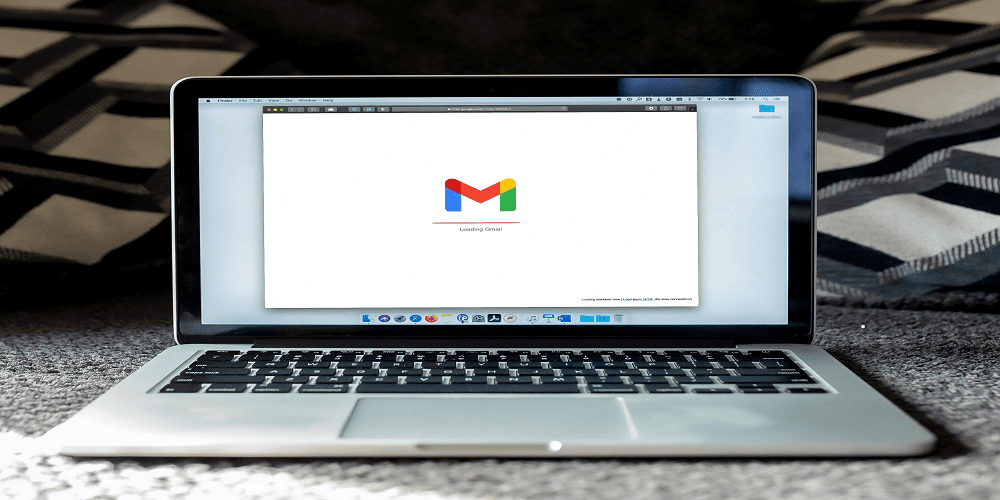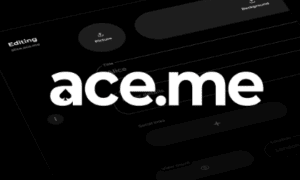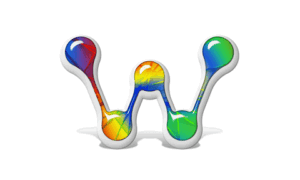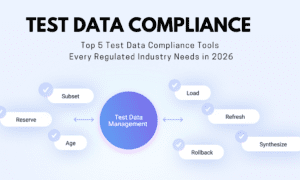Are you tired of drowning in a sea of unread emails? Do you dream of achieving the elusive state of Inbox Zero? Look no further, because we have the ultimate guide to transform you from an email amateur to a Gmail guru! In this blog post, we will take you on a journey through the ins and outs of creating a Gmail account—one that not only organizes your messages but also elevates your productivity. Get ready to bid farewell to cluttered inboxes and say hello to email mastery with our step-by-step instructions.
Introduction to Gmail and its Benefits
Gmail, also known as Google Mail, is a free email service provided by Google that offers users a variety of features and benefits. It was launched in 2004 and quickly gained popularity due to its user-friendly interface, efficient organization tools, and advanced security measures. In this section, we will discuss the various benefits of using Gmail and why creating an account can greatly improve your email experience.
1. User-Friendly Interface
One of the most significant advantages of using Gmail is its simple and intuitive interface. The layout is clean, organized, and easy to navigate, making it suitable for both beginners and experienced email users. The inbox is divided into three categories: primary, social, and promotional, which helps you prioritize important emails while keeping promotional or social emails separate. Additionally, Gmail offers customizable themes that allow you to personalize your inbox according to your preferences.
2. Ample Storage Space
Another major benefit of using Gmail is its generous storage space. With a free account, you get 15 GB of storage across Google Drive, Gmail, and Google Photos combined. This means you can store all your important emails without having to worry about running out of space anytime soon.
3. Efficient Organization Tools
Gmail comes equipped with various organization tools that make managing your emails easier than ever before. You can create labels to categorize your emails or use filters to automatically sort incoming messages into specific folders based on the sender or subject line.
Step 1: Creating a Google Account
Before you can start using Gmail, you need to have a Google account. This account will not only grant you access to Gmail but also other Google services such as Drive, YouTube, and Google Calendar. In this section, we will guide you through the process of creating a Google account.
1. Go to the Gmail website.
To begin, go to the official Gmail website at www.gmail.com. This is where you will find the option to create a new account.
2. Click on “Create Account.”
On the Gmail homepage, click on the blue button that says “Create Account”. This will take you to the registration page.
3. Fill in your personal information.
On the registration page, you will be asked to provide some basic personal information, such as your first name, last name, and desired email address. It is recommended to use your real name for professional purposes.
4. Choose an email address.
Next, choose an email address that you would like to use for your account. Your email address needs to be unique, so it may take some trial and error until you find one that is available. You can either choose an “@gmail.com” or “@googlemail.com” domain for your email address.
5. Create a strong password.
It is important to create a strong password for your Google account in order to keep it secure from hackers or unauthorized access. Use a combination of letters (both uppercase and lowercase), numbers, and special characters for a strong password.
6. Verify your phone number.
Google may ask you to verify your phone number for added security. This step is optional, but it is recommended to do so in case you need to reset your password in the future.
7. Agree to the terms of service.
Before you can create your account, you will need to agree to Google’s Terms of Service and Privacy Policy. Make sure to read these documents carefully before agreeing.
8. Complete the captcha.
To ensure that you are a real person and not a computer program, Google will ask you to complete a captcha. This involves typing in the characters that you see on the screen.
9. Click “Next.”
Once you have completed all the steps above, click on the blue button that says “Next”. This will take you to your new Gmail inbox.
Congratulations! You have successfully created a Google account and can now access Gmail and other Google services using your new email address and password.
Choosing a username and password
When creating a Gmail account, one of the first steps is to choose a username and password. This may seem like a simple task, but it’s important to put some thought and consideration into this decision. After all, your username and password are what will protect your personal email account from unauthorized access.
Here are some tips to help you choose a strong and secure username and password for your Gmail account:
1. Keep it unique: Your username should be something that is not easily guessable or too common. Avoid using your name or birthdate, as these can be easily figured out by others. Instead, try incorporating numbers or special characters into your username to make it more unique.
2. Make it easy to remember: While having a unique username is important, it’s also crucial that you choose something that you can easily remember. You don’t want to constantly have to reset your password because you keep forgetting it.
3. Use a combination of letters, numbers, and symbols: For maximum security, use a combination of uppercase and lowercase letters, numbers, and special characters in both your username and password. This makes them harder to crack through brute-force methods.
4. Avoid using personal information: As mentioned before, avoid using personal information such as your name or birthdate in either your username or password. This information can be easily found on social media or other public platforms.
Adding recovery information
Adding recovery information to your Gmail account is an important step in securing and protecting your email. It allows you to recover your account in case you forget your password or if it gets compromised. In this section, we will guide you through the process of adding recovery information to your Gmail account.
1. Accessing Account Settings
To begin, log into your Gmail account and click on the gear icon on the top right corner of the screen. This will open a drop-down menu where you can select “Settings”.
2. Navigating to the Security Tab
Once on the settings page, navigate to the “Security” tab by clicking on it from the menu located on the left side of the screen.
3. Adding a Recovery Email Address
Underneath the “Account recovery options” section, click on “Recovery email”. Here, you can add an alternate email address that can be used to recover your Gmail account. Enter a valid email address and click on “Save Changes”.
4. Verifying the Recovery Email Address
A verification email will be sent to the alternate email address provided. Log into that email account and locate the verification message from Google. Click on the verification link within that message to complete setting up your recovery email.
5. Setting up a phone number as a recovery option (optional)
You also have the option to add a phone number as a recovery option for your Gmail account. To do so, click on “Add Recovery Phone” under “Account Recovery Options.” Enter a valid phone number and select
Step 2: Setting Up Your Inbox
Now that you have successfully created your Gmail account, it’s time to set up your inbox to ensure maximum efficiency and organization. Here are some steps you can follow to get started:
1. Customize the layout:
Gmail allows you to customize the layout of your inbox according to your preferences. You can choose from different display density options, such as Default, Comfortable, or Compact. This will help you decide how many emails you want to see on one screen and make it easier for you to navigate through your inbox.
2. Create labels:
Labels are a great way to categorize and organize your emails. You can create labels based on different topics like work, personal, finances, etc., or even specific projects or clients if applicable. To create a label, simply click on the “Create new label” option in the left sidebar of your Gmail inbox.
3. Use filters:
Filters allow you to automatically sort incoming emails into specific folders or labels based on certain criteria, such as sender, subject line, keywords, etc. This is particularly useful for managing newsletters or promotional emails that may clutter your inbox but are still important.
4. Set up a priority inbox:
The Priority Inbox feature in Gmail helps you stay focused by highlighting important messages at the top of your inbox while sorting less important ones into separate sections. You can set up this feature by going into Settings > Inbox > Inbox type and choosing “Priority Inbox”.
Customizing your layout
Customizing your layout is an important step in setting up a Gmail account that not only looks great but also maximizes your productivity and efficiency. With the ability to customize everything from the theme and background to the organization of your inbox, Gmail offers a wide range of options to suit your personal preferences and needs.
Here are some tips on how to make the most of customizing your Gmail layout:
1. Choose a Theme: The first thing you’ll notice when opening up your Gmail account is the default theme. This may be fine for some, but if you want to add a personal touch or simply prefer something different, click on the gear icon in the top right corner and select “Themes”. Here, you can choose from a variety of pre-made themes or even upload your own image as a background.
2. Organize Your Inbox: With tons of emails coming in daily, it’s crucial to have an organized inbox. Luckily, Gmail allows you to create labels and filters to automatically sort incoming emails into specific categories. To do this, navigate to “Settings” > “Labels” and create new labels as needed. You can then use these labels as filters to ensure that important emails land directly in their designated folder.
3. Utilize Tabs: Another way to keep your inbox organized is by taking advantage of tabs within Gmail. These tabs (Primary, Social, Promotions, and Updates) automatically filter incoming emails based on their content so that they appear in separate tabs rather than all together in
Organizing your emails with labels and filters
Organizing your emails is key to maintaining a clutter-free inbox and staying on top of important messages. Gmail offers two useful tools for organizing your emails: labels and filters.
Labels are like tags that you can assign to your emails, making them easy to find and sort through. To create a label, simply click on the “More” button next to the email title and select “Create new label.” You can give your label a specific name, such as “work,” “personal,” or “travel.” Once you have created a label, you can apply it to any email by clicking on the same “More” button and selecting the appropriate label.
One of the main benefits of using labels is that they allow you to categorize your emails in a way that makes sense to you. For example, if you receive a lot of work-related emails, creating a “work” label will help you quickly identify and access those messages without having to sift through all your other emails. You can also add multiple labels to an email if it falls into more than one category.
Another helpful feature of labels is that they offer color-coding options. This allows you to visually differentiate between different types of emails at a glance. For instance, you could assign all work-related emails the color red, while personal emails could be marked blue.
Filters are another powerful tool for organizing your Gmail inbox. Filters automatically route incoming messages based on criteria that you set. For example, if you frequently receive promotional emails from certain
Step 3: Understanding the Different Tabs and Categories
As you start using your new Gmail account, one of the first things you will notice is the presence of different tabs and categories in your inbox. These tabs and categories are designed to help you better organize and manage your emails, making it easier for you to find what you need quickly.
1. Primary Tab:
The primary tab is where all your important emails land by default. This includes personal emails from friends, family, and co-workers, as well as any messages that Gmail considers important based on its algorithm. It is recommended to check this tab regularly so that you don’t miss out on any crucial emails.
2. Social Tab:
The Social tab is where all your social media notifications, such as Facebook updates or Twitter mentions, will be automatically filtered. This helps keep your main inbox clutter-free and makes it easier to focus on important emails.
3. Promotions Tab:
As the name suggests, this tab contains promotional emails from various businesses and marketing campaigns. These can include newsletters, sale promotions, or advertisements from websites that you have subscribed to or made purchases from using your email address.
4. Updates Tab:
The Updates tab contains all the automated updates and confirmations related to online purchases or registrations made using your email address. This includes order confirmations, shipping status updates, or flight reservations.
Primary, Social, Promotions, Updates, and Forums
Creating a Gmail account not only gives you access to Google’s powerful email service but also opens up a world of features and tools that can help you stay organized and efficient. In this section, we’ll take a closer look at the different sections of your Gmail inbox—Primary, Social, Promotions, Updates, and Forums—and how they can enhance your email experience.
1. Primary: This is where all your important emails land. These could be messages from colleagues, clients, family members, or anyone else who has your primary email address. Gmail uses its advanced algorithms to automatically filter out spam and other unnecessary emails from this section so that you can focus on what matters most.
2. Social: As the name suggests, this section contains emails from social media platforms like Facebook, Twitter, LinkedIn, etc. By organizing these emails separately from your primary inbox, Gmail helps you prioritize which ones need attention and which ones can be checked later on when you have more time.
3. Promotions: Have you ever subscribed to an online store or a brand’s newsletter? Chances are, their promotional emails will end up in this section of your inbox. While some may see it as cluttering their inbox, it actually works in your favor by keeping all promotional content in one place for easy reference when needed.
4. Updates: Similar to promotions, updates are another type of email that might not require immediate attention but still holds valuable information for you. This category includes things like flight confirmations and tracking notifications for
Step 4: Managing Contacts and Creating Groups
Managing contacts and creating groups is an essential step in optimizing your Gmail account for efficient email management. By organizing your contacts and grouping them according to specific categories, you can streamline your communication process and save time.
Here are some helpful tips for managing contacts and creating groups in your Gmail account:
1. Importing Contacts:
The first step in managing contacts is to import them into your Gmail account. If you have existing contacts from other email accounts or applications, you can easily import them into Gmail by clicking on the ‘Import Contacts’ option under the ‘Contacts’ tab. This will save you the hassle of manually adding each contact.
2. Creating labels:
Labels are a great way to categorize your contacts based on different criteria, such as work, family, friends, etc. To create a label, go to the ‘Contacts’ tab and click on the ‘Create Label’ button. You can then assign each contact to a specific label by selecting their name and clicking on the label icon at the top.
3. Grouping Contacts:
Similar to labels, groups allow you to organize your contacts based on common characteristics or shared interests. For example, if you have a group of colleagues that you frequently email together, you can create a group for them by going to the ‘Contacts’ tab and clicking on the ‘Create Group’ option.
4. Adding Contacts to Groups:
To add new or existing contacts to a group, select their names from your contact list and click on the ‘Groups’ button at
Adding
Now that you have learned how to create a Gmail account, it’s time to explore the various features and tools available to make your email experience even more efficient and organized. Here are some tips on how to maximize the functionality of your new Gmail account:
1. Labels: One of the key features of Gmail is the ability to add labels to your emails. Labels act as tags or categories that you can assign to individual emails for easy organization. By adding labels, you can quickly sort through your inbox and find specific emails without having to scroll through numerous messages.
To add a label, simply open an email and click on the “Labels” icon at the top menu bar. From there, you can either choose an existing label or create a new one by clicking on “Create New.” You can also assign multiple labels to one email for better categorization.
2. Filters: Another useful feature in Gmail is filters. Filters allow you to automatically organize incoming emails based on certain criteria, such as sender, subject, or keywords in the body of the email. This is especially helpful for managing newsletters, promotions, and other types of automated emails.
To set up a filter, go to Settings > Filters and Blocked Addresses > Create a new filter. From there, you can specify your desired criteria and actions, such as applying a label or archiving the email.
3. Canned Responses: If you find yourself sending similar responses or messages frequently, then canned responses are here to save you time and effort.
Conclusion
Gmail has become one of the most popular email services in the world, with over 1.8 billion users worldwide. And it’s no surprise why Gmail offers a user-friendly interface, powerful tools, and a reliable platform that makes managing your emails easy and efficient.



































